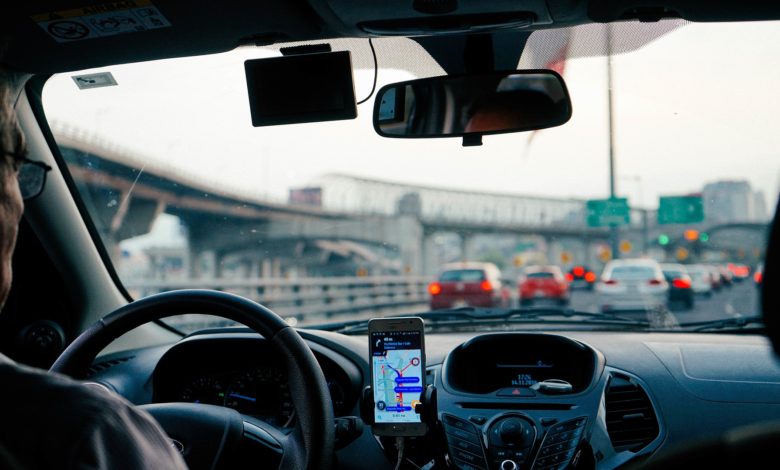The Risks of Using a Mobile Phone While Driving

Mobile phone is one of the distracting factors while driving, and this is a very dangerous situation. Even before the rise of modern telecommunications, distracted driving has always been one of the main causes of automobile accidents. Often, paying attention to something secondary in driver concentration is a condition that affects the safe driving of the vehicle. Situations that can have an impact on mindful driving generally fall into three main categories:
• Visual distractions that can cause drivers to take their eyes off the road: Whether the driver is turning his head to look at the passenger or street sign, reading the name of a song on the sound system screen, or checking the cell phone sitting next to him in the car, all it takes is a second to distract. And the end of a second of distraction is an accident.
• Manual distractions that allow drivers to take their hands off the steering wheel: Tuning the radio, opening the glovebox to find some essential items, or picking up a mobile phone are examples of manual distractions.
• Cognitive distractions: can occur when a driver is no longer focused on the primary task of driving. This may be due to lethargy, being busy with an upcoming meeting, or thinking about what to eat for dinner. Whatever the reason for the distraction, the consequences for drivers can be serious. Distracted drivers not only shorten their reaction time, they are also less aware of what is happening around them, including traffic signs, other cars, or pedestrians about to pass in front of them. According to a research study dated 2006, it is caused by the distraction of 78 percent and accidental 65 percent of accidents in the USA by the National Highway Traffic Safety Administration. More recent studies have shown that one in six fatal accidents in the United States may be linked to distracted driving.
It’s probably common knowledge that cell phone use has played an important role in distraction in recent years. Cell phones are not just universal, drivers learn at their own discretion, such as GPS navigation, appointment reminders or communicating with friends and family while driving. It is largely due to this mobile phone addiction that many automakers have incorporated Bluetooth technology into their latest cars to enable hands-free use. Unfortunately, this has led many drivers to assume that the handsfree option eliminates the risk of reckless driving, but it is not.
However, it is the popularity of messaging that probably causes the biggest problems for drivers. According to a 2010 study, it was found that the effects of manual, visual and cognitive distractions caused by messaging while driving increased the likelihood of collapse by 23 percent. Still, although most drivers are aware of the potential dangers of cell phone use while driving, this awareness does not have much of an impact on actual driving behavior. This may be especially true for younger drivers who have been found to account for 21 percent of texting and driving-related accidents.
Admittedly, there is no question that young drivers (especially young male drivers) are at higher risk for serious driving accidents. According to Canadian traffic statistics, for example, a quarter of total traffic accidents were fatal between 2000 and 2005 due to accidents involving young drivers aged 15 to 24 years. However, determining the actual number of vehicle deaths that can be linked to cell phone deaths is much more problematic.
In a 2015 survey study, over time, 27 percent of a large sample of Ontario residents aged 16 to 19 began texting while driving, in mobile phone use, but in a second case surveyed just three years later, the rate dropped to six percent. This decline should be considered as a result of the heavy penalties currently prevailing in many countries rather than whether young drivers have become more cautious over time.
A recent research study published in a Canadian Psychology examines these questions as well as looking at some of the motivations related to cell phone driving. Jessica A. Dénommée and a research team from Laurentian University have undertaken a thorough review of research work on recent changes in driving legislation and how drivers aged sixteen to nineteen cope with increased penalties for distracted convictions under the new law. Twenty-nine research articles were selected for further analysis with careful scanning. The studies citing these studies used data from self-report questionnaires on driver behavior and attitudes, the use of driving simulators and natural studies using in-car cameras to monitor driving behavior. Different factors related to cell phone use while driving include:
Attitude towards cell phones: Despite being aware of the risks associated with cell phone use while driving, young drivers often rely on cell phones to stay in touch with family and friends and to maintain a presence on social media. This often causes them to view the advantages of cell phone use as outweighing the potential dangers. Young drivers who have difficulty avoiding mobile phone use while driving are more prone to other risky behaviors than others. When reporting their cell phone usage, young drivers also reported relying on different strategies to avoid problems. These are strategies such as not using cell phones after dark, during working hours, when the weather is bad, or in areas with many pedestrians.
Gender: While mobile phone use by young drivers seems to be equally divided between males and females, there are some serious gender differences in mobile phone use while driving. Not only did women report sending shorter text messages than men, but they were more likely to rate driving as more annoying than their male counterparts. In addition, while women are more dependent on cell phones for social purposes, men trust that they can drive safely even while texting. This is a situation that leads to the next factor.
The Illusion of Control: Drivers who have great confidence in their ability to drive think they are more likely to text while driving because problems can be avoided. Perception of personal vulnerability is often seen in young men and often leads them to engage in various risky behaviors. They also tend to be chronic multitaskers who are confident in their ability to engage in different activities.
Age: This is the most obvious factor at work, older drivers are much more cautious on the road than their younger counterparts. Older drivers are more experienced than younger drivers and generally have safer driving habits. And given that cell phones are a relatively new invention, older drivers may not rely on them to stay in touch. However, ironically older drivers are also able to perform much less duties than their younger counterparts, which could make them more cautious about anything that might distract them.
Hands-free technology use: While Bluetooth, voice recognition technology and other innovations are seen as a practical alternative to mobile phone use in cars, research using driving simulators has not been so supportive. Experimental studies examining driving behavior under different conditions, such as driving alone, using a handsfree device, or speaking to passengers, have found that any distraction can affect driving behavior. In fact, the use of hands-free technology for in-car and phone calls with passengers appears to affect the driver’s ability to keep their eyes on the road, enter traffic, and apply brakes when necessary. However, manual use of a mobile phone is still the biggest distraction and points to the greatest danger to safe driving.
Although the risks of cell phone use in the car are well known, the need to stay in touch makes this risk null, even for young drivers. Also, young drivers who engage in such risky behaviors but manage to avoid problems on the road can develop a false sense of security that can make warnings about cell phone use less receptive. Despite various attempts to prevent unsafe driving, including programs in schools, public service announcements, and stronger legal penalties for drivers caught on mobile phones, it is controversial whether all of these approaches are successful.
Because it stays in constant contact with the world, it becomes even more critical to decide where and when we can use these devices, and to know if this affects our personal safety while driving. While some advocates have suggested a technical fix to the problem, including enabling automakers to develop systems that disable hands-free and handheld devices while the vehicle is in motion, it is likely to prove to be a tough sell for customers and automakers. Better prevention programs, including driving simulators, can also be helpful to show drivers how texting affects their ability to drive safely.
After all, the use of mobile phones in cars is an unlikely problem to be lost. Finding better solutions will become more important than ever in the years to come.





